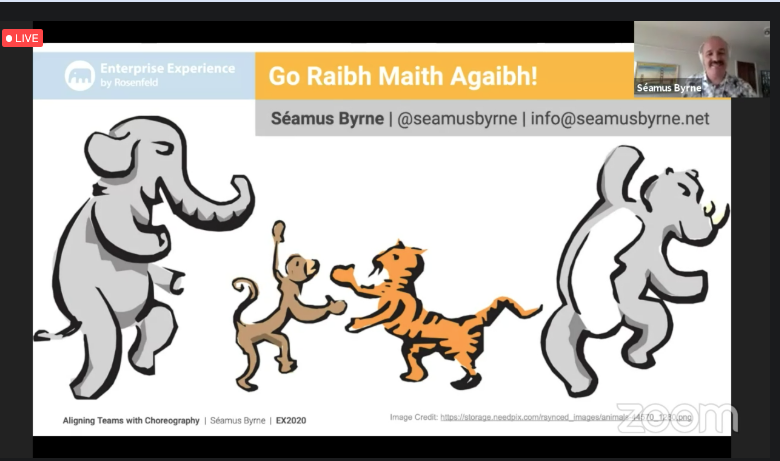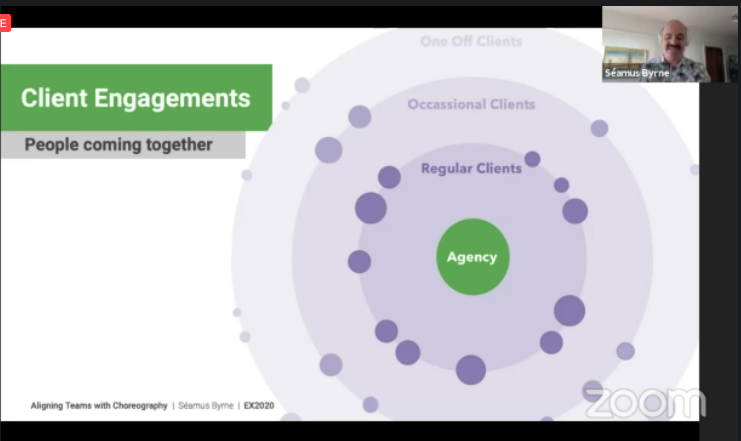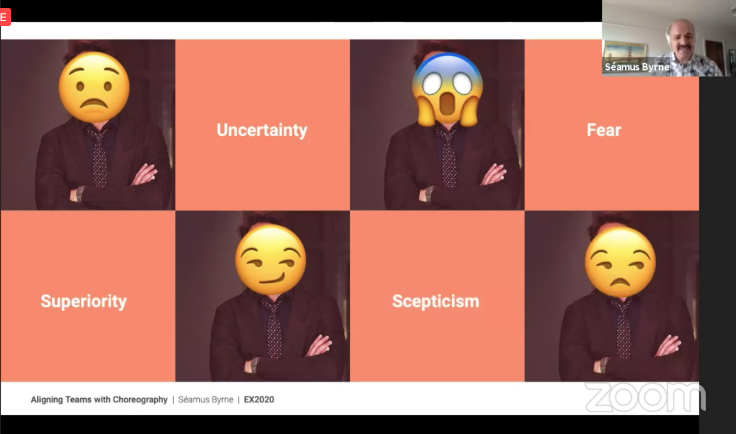Session notes: Aligning Teams with Choreography
Team dynamics impact outcomes
Relationships are at the heart of client engagements. When thinking about past experiences in collaboration between agencies and enterprises, we conjure imagery of tension, resolution, and overcoming obstacles. No teams–nor individuals–are the same. We all have different working styles, personalities, and relationships. Successful, elevated outcomes require integration and bringing people together. Conversely, poorly integrated teams inhibit the caliber of project outcomes.
“It’s in the best interests of clients and agency teams to work well together. Otherwise, you’re leaving value on the table.”
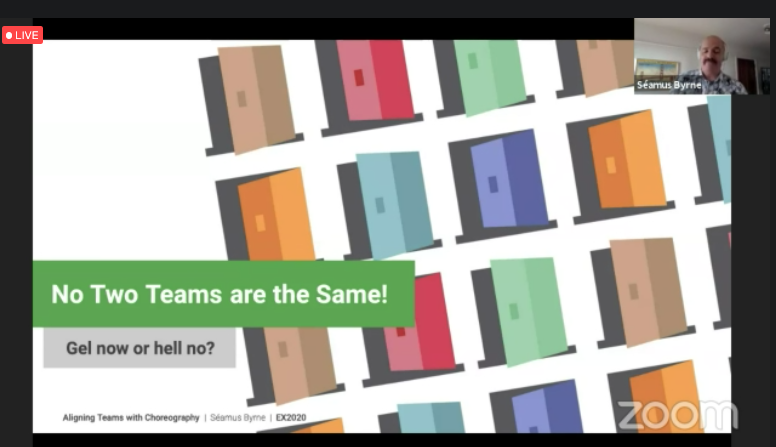
Obstacles to inter-team integration
1. Unprepared internal teams
Agency designers are often met with mixed reactions when first connecting with internal enterprise teams. As artfully depicted through emojis below, sentiments can range from skepticism through fear. Internal teams should try their best to remember that external team members are there to help, then remember to mentally prepare accordingly.
2. Agencies are kept in the dark
Modern product design is complicated. Agency teams are typically given several months and a snapshot of context. This can result in an iceberg of unanticipated needs and problems versus embedded teams. Strive for greater transparency.
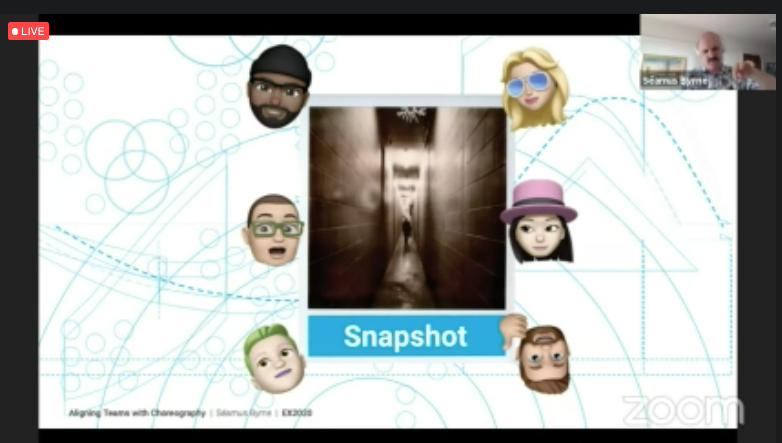
3. On the job scope shifting
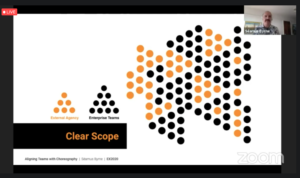
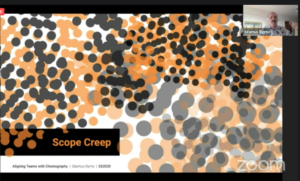
4. Dancing Monkey Culture
While agency designers frequently assume the role of the “dancing monkey” who champion impact, ownership, and can-do-ness, they require support from the internal team to be successful in modern agile product development.
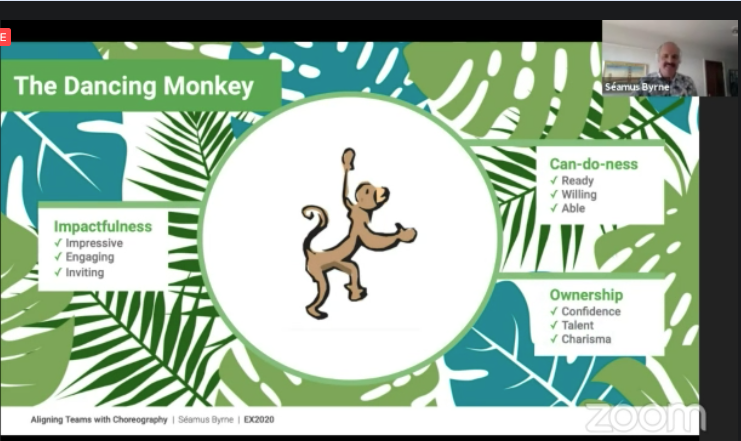
Introducing: choreography
Séamus’ journey with dance began last year, when he studied Spanish in Columbia and took dancing as an elective. He realized coordinating enterprise and agency teams resembled choreography in dance.
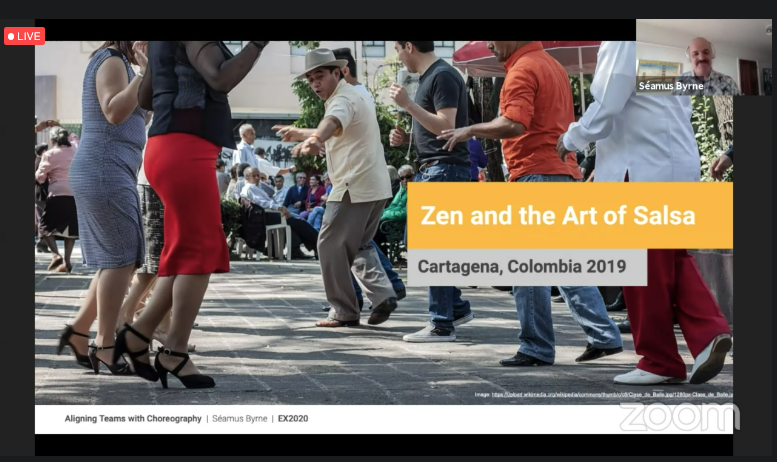
Principles of dance (and client-enterprise engagement)
1. Space
Defining the levels of interaction design. Clarifying which level the agency will work on and defining the exact product/service scope.
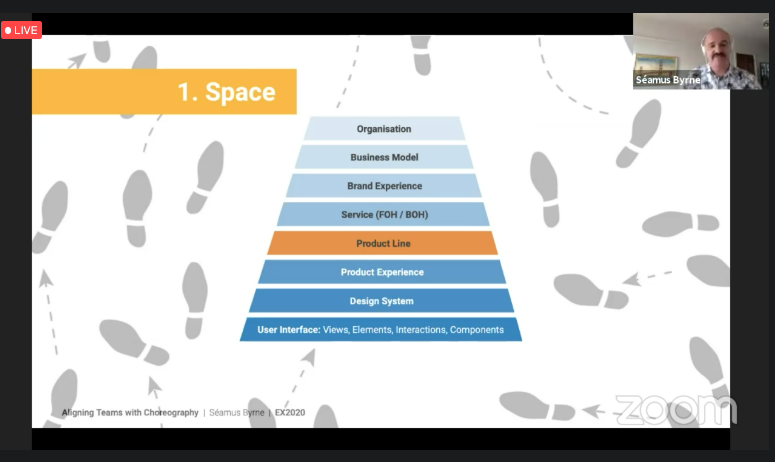
2. Time
Sharing insight into the timeline for epics, sprints, and outcomes.
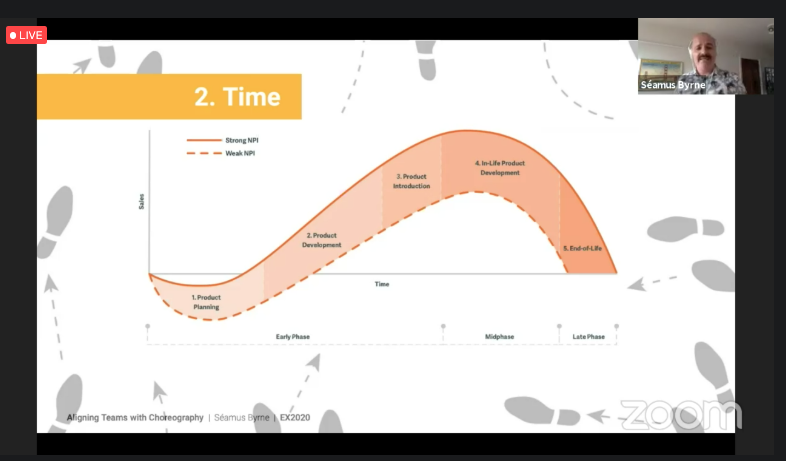
3. People
Clearly documenting who’s doing what a la RACI chart.
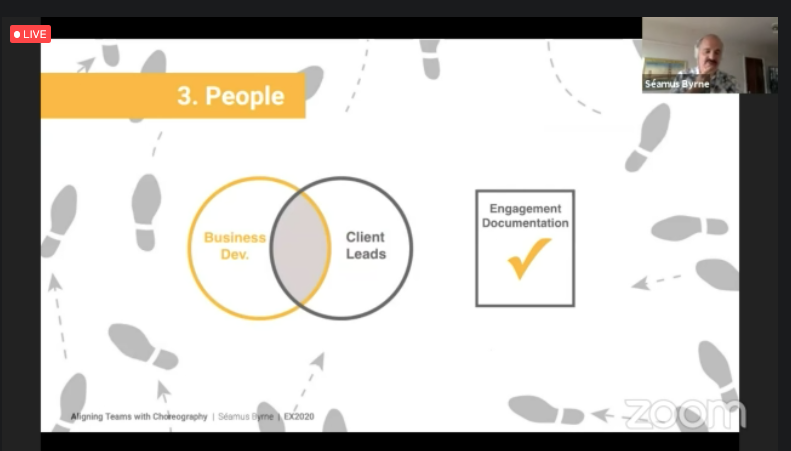
4. Routine
Working together to execute on an engaging routine
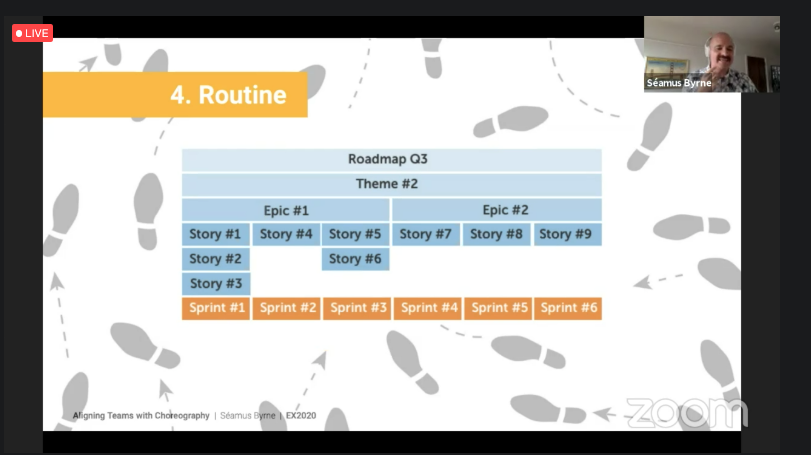
Remember to dance!
